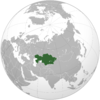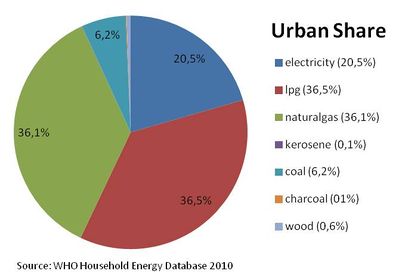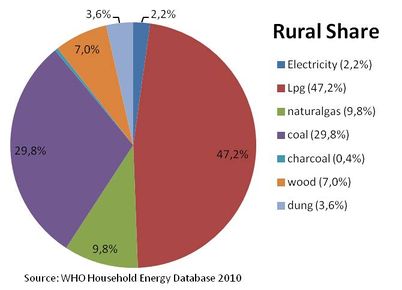Kazakhstan Energy Situation
| Kazakhstan | |||
| |
| ||
|
Capital |
Astana (51°10′N 71°25′E) | ||
|
Official language(s) |
Kazakh (1st)/Russian (2nd) | ||
|
Government |
Presidential republic | ||
|
President |
Nursultan Nazarbayev | ||
|
Prime Minister |
Karim Massimov | ||
|
Total area |
2,724,900 km2 | ||
|
Population |
16,600,000 (2011 estimate) | ||
|
Population - Rural |
41% (6.4 million | ||
|
Population - Urban |
59% (9.1 million) | ||
|
Population Density |
6 people/ km² (one of lowest in the world) | ||
|
Avg. Household Size |
6 members | ||
|
Literacy Rate |
99.5% | ||
|
GDP (nominal) |
$180.147 billion | ||
|
GDP per Capita |
$10,951 | ||
|
GNI per Capita |
$ 7769.40 | ||
|
Currency |
Tenge (KZT) | ||
|
Time Zone |
(UTC+5/6) | ||
|
Calling Code |
+7-6xx, +7-7xx | ||
Geography and Climatic Conditions
The Republic of Kazakhstan is located in Central Asia. The neighbooring countries are Russia in the North and West, China China in the East, Kyrgyztan, Uzbekistan and Turkmenistan in the South. The capital of Kazakhstan is Astana and the country is administratively divided into 14 regions.
Forest/steppe and steppe land areas comprise 10% of the territory, 60% semi-desert and desert land and about 5% are categorized as highlands. The land covered by forest is 1,2% with decreasing forest coverage by approx. -0,17% annually[1]. The percentage of land and water is 98% to 2%. The climate is continental with cold dry winters and hot dry summers. The perception ranges between 15 to 320 mm annually. The average minimum is 3.8°C and the average maximum temperature is about 14.6°C[2].
Kazakhstan has 220 million hectares of agricultural land, which comprises 10,8% arable land, 2,2% of haying land, and 85%pasturable land.
Economic Development
The Gross Domestic Product (GDP) until 2008 was around 141 billion US$, refering to 9,075 US$ per capita. The GDP consits out of 5,4% agriculture, 42,8% industry, and 51,8% services share. The annual growth rate of the GDP was about in 7% 2010, 1.2% in 2009, and 3.2% in 2008. Main agricultural export products are grain, flour, cotton (15%), and leather as well as wool (25%).
15.5 million is the population of Kazakhstan. The population density is 5.7 people per square meter, which is one of the lowest in the world. The percentage of urban and rural population is 59% to 41%.
There is a discrepancy between rural and urban population income. While 32% of the rural population lives below the poverty line, the urban rate is 16%.
Energy Situation
Kazakhstan owns about 0.5% of the world´s mineral energy resources, equaling 90 billion tons of oil equivalent. This number includes 70% coal, 22% oil, and 8% gas.
Energy Supply
Type your text here
Electricity
Sources
Biomass and hydropower [3]
Stability
The losses of energy in the transmission and distribution process are 25–50%.
Energy Consumption
Type your text here
National Level
Electricity
Household Level
Percentage of energy types used for cooking in urban areas [4]
Percentage of energy types used for cooking in rural areas[4]
Percentage of population using solid fuels (charcoal, coal, cropwaste, dung and wood) as cooking energy:
National: 11.6%, Urban: 5.5%, Rural: 25.2%
Solid Fuel Use Impact on Health[6]
• Total annual deaths attributable to solid fuel use: < 100 persons
• Percentage of national burden of diseases attributable to solid fuel use: 0%
Access Rate
Electrification Rate
72,7%
Renewable Energies
In Use
wind and hydropower
Potentials[7]
Wind energy: Kazakhstan has enormous wind resources but only a small part of the wind potential is used; 500kv out of a potential of 1.3 trillion kWh of electric energy per year at the Jungar Gates.
Despite the very favourable conditions for solar energy, there is little use of the resource.
Solar Energy
Type your text here
Wind Energy
Type your text here
Biomass
Type your text here
Biogas
Type your text here
Hydro Power
Type your text here
Other renewable Sources
Type your text here
Key problems of the energy sector
Type your text here
Policy framework, laws and regulations
Type your text here
General Energy policy, Energy strategy
Type your text here
Important Laws and regulations
Type your text here
Specific strategies (Biomass, renewable energies, rural electrification, energy access strategy etc.)
RE-Law from 2009: 5% of Kazakhstan’s energy balance must by renewable by 2024. The law also uses feed-in tariffs and renewable energy certificates to encourage renewable energy investment.
Institutional set up in the energy sector
Type your text here
Governmental institutions Private sector (enterprises, NGOs)
Type your text here
Activities of other donors, activities of NGOs
Type your text here
Existing projects
Type your text here
Publications
Type your text here
External links
References
- ↑ http://rainforests.mongabay.com/deforestation/
- ↑ http://data.un.org/CountryProfile.aspx?crName=Kazakhstan
- ↑ http://iea.org/stats/renewdata.asp?COUNTRY_CODE=KZ
- ↑ 4.0 4.1 fckLRWHO 2010: WHO Household Energy Database Cite error: Invalid
<ref>tag; name "WHO 2010" defined multiple times with different content - ↑ WHO 2007
- ↑ WHO (2006): Fuel for Life - Household Energy and Health
- ↑ http://www.inogate.org/index.php?option=com_inogate&amp;amp;amp;amp;view=countrysector&amp;amp;amp;amp;id=30&amp;amp;amp;amp;Itemid=63&amp;amp;amp;amp;lang=en























